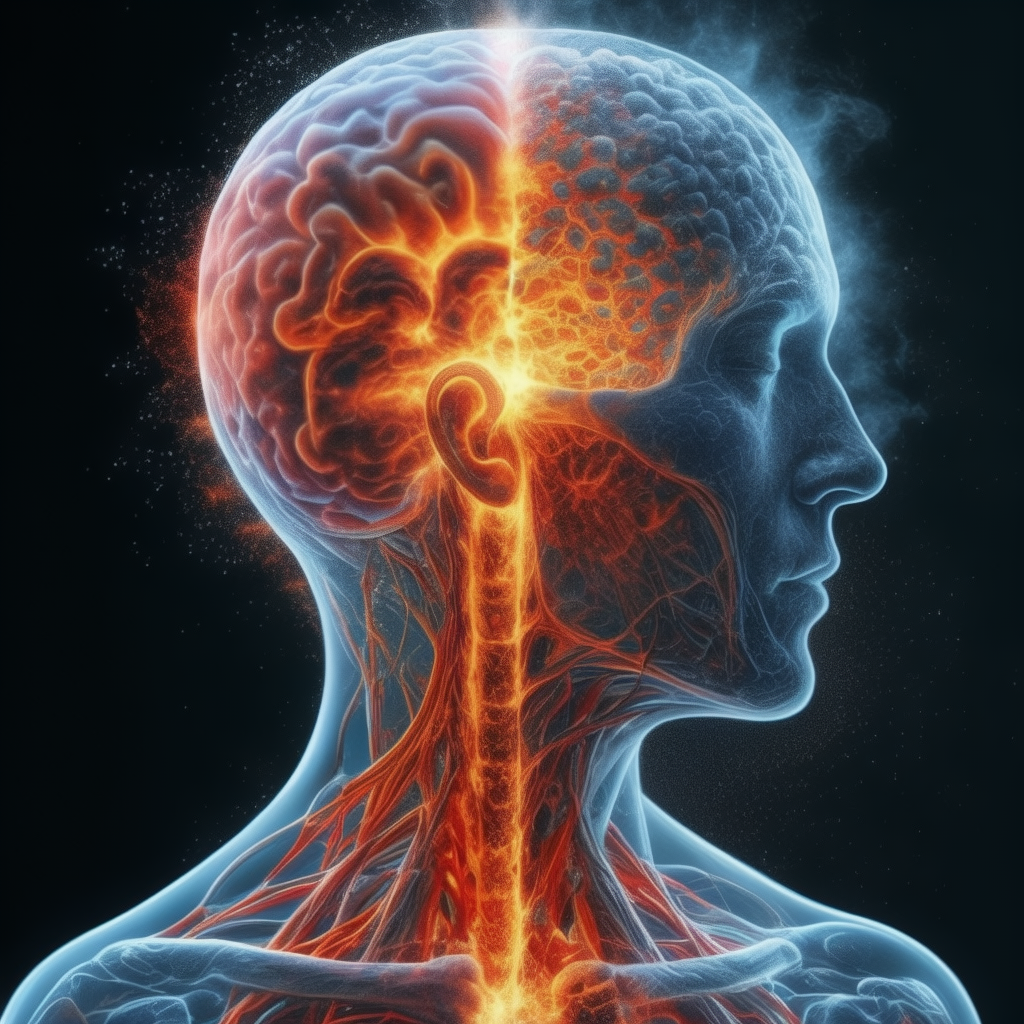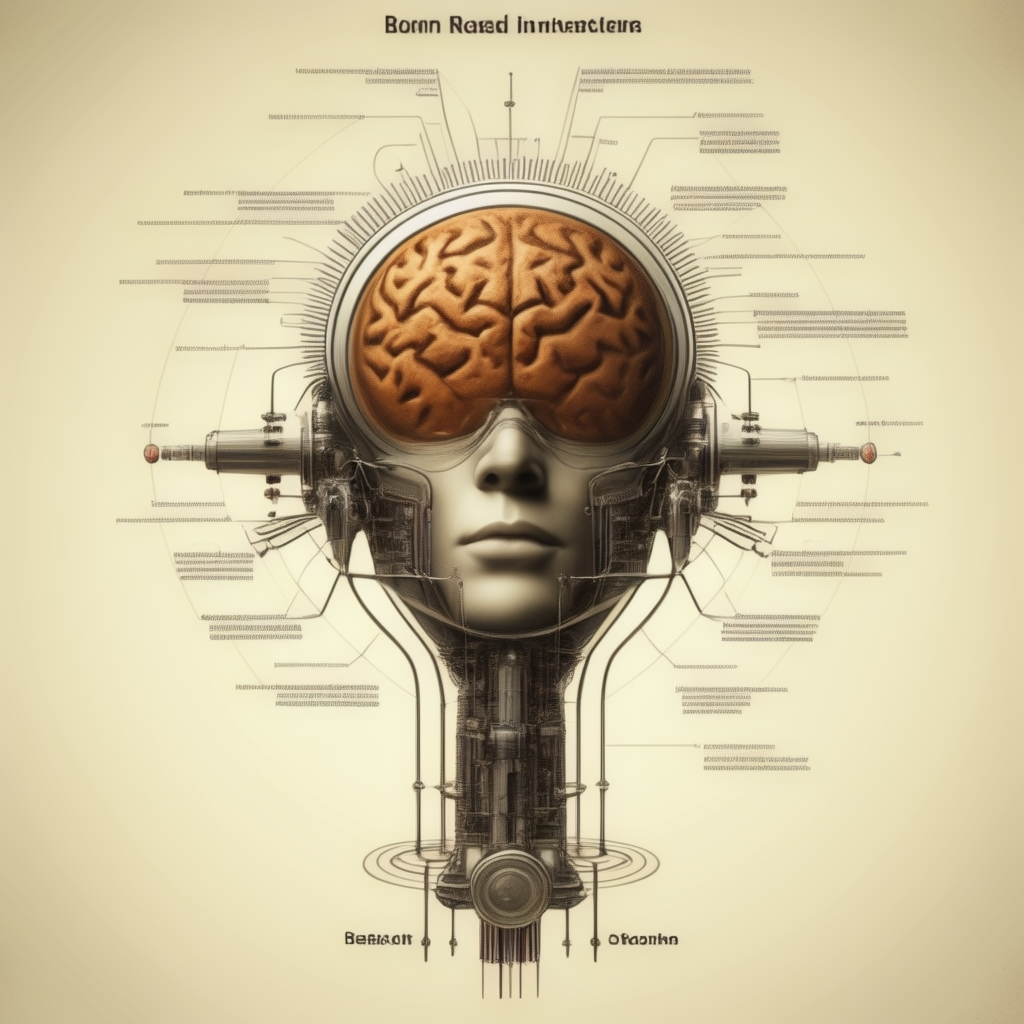Swami Vivekananda, a prominent Indian spiritual leader and philosopher, is not directly known for scientific discoveries or technological innovations. However, his teachings and philosophy have influenced several prominent scientists and intellectuals, inspiring them to explore new realms of thought and discovery. Here are some ways in which Vivekananda’s ideas have contributed to the scientific and technological landscape:
1. Promotion of Rational Inquiry and Scientific Temper
Vivekananda emphasized the importance of rationality, reason, and scientific inquiry. He believed that spirituality and science are not mutually exclusive but can complement each other. He encouraged people to explore the mysteries of the universe through both scientific and spiritual means, promoting a holistic understanding of life and existence.
2. Influence on Nikola Tesla
One of the most notable instances of Vivekananda’s influence on science is his interaction with the renowned inventor and electrical engineer Nikola Tesla. The two met in New York in the 1890s, and Vivekananda introduced Tesla to the concepts of Vedanta, a school of Hindu philosophy that discusses the nature of reality and consciousness. Tesla was intrigued by the similarities between Vedantic principles and his own work on energy and vibration. This encounter is said to have influenced Tesla’s later thoughts on energy and his exploration of wireless energy transmission.
3. Advocacy of the Unity of Knowledge
Vivekananda advocated the idea that all knowledge, whether scientific or spiritual, leads to the same ultimate truth. He argued that the division between science and religion is artificial and that both are ways of understanding the universe. This perspective has inspired scientists and thinkers to look beyond traditional boundaries and explore interdisciplinary approaches.
4. Promotion of Education and Intellectual Growth
Vivekananda emphasized the importance of education in personal and societal development. He believed that education should encompass both spiritual and secular knowledge, including the sciences. His advocacy for a broad and inclusive approach to education helped lay the groundwork for a more holistic educational system, encouraging the pursuit of scientific knowledge.
5. Philosophical Foundations for Modern Thought
Vivekananda’s teachings on the nature of the self, consciousness, and the universe have resonated with modern scientific theories, particularly in fields like quantum physics and neuroscience. His ideas on the interconnectedness of all beings and the potential of the human mind have parallels in contemporary discussions about consciousness and the nature of reality.
6. Inspiration for Indian Scientists and Technologists
In India, Vivekananda’s emphasis on self-reliance, intellectual curiosity, and national pride has inspired generations of scientists and technologists. His call for harnessing India’s spiritual and intellectual heritage for national development has motivated many to pursue careers in science and technology.
In summary, while Swami Vivekananda may not have contributed directly to scientific discoveries or technological innovations, his teachings and philosophy have profoundly influenced the thinking of scientists and intellectuals. His emphasis on rational inquiry, unity of knowledge, and the importance of education has helped shape a mindset conducive to scientific exploration and innovation.
1. Promotion of Rational Inquiry and Scientific Temper
Swami Vivekananda was a strong advocate for the use of rationality and reason in all aspects of life, including the spiritual and scientific domains. He believed that true knowledge could only be attained through a combination of empirical observation, logical analysis, and spiritual insight. This perspective was somewhat revolutionary at a time when religion and science were often seen as opposing forces.
Rationality and Spirituality: Vivekananda argued that spirituality does not conflict with scientific inquiry but rather complements it. He believed that the same rational principles that govern the physical universe also apply to the spiritual realm. For him, spirituality was not a matter of blind faith but a science that could be explored through introspection and meditation. He stated, “We want to lead mankind to the place where there is neither the Vedas, nor the Bible, nor the Koran; yet this has to be done by harmonizing the Vedas, the Bible, and the Koran.”
Encouragement of Scientific Exploration: Vivekananda’s emphasis on rational inquiry encouraged individuals to explore the mysteries of the universe scientifically. He believed that the scientific method—observation, experimentation, and verification—was essential for discovering truth. By promoting a balanced approach that included both scientific and spiritual perspectives, Vivekananda laid the groundwork for a holistic understanding of life and existence. This inclusive approach has influenced many thinkers and scientists to consider interdisciplinary approaches to understanding complex phenomena.
Impact on Indian Education and Thought: In India, Vivekananda’s advocacy for rational thought and scientific inquiry helped to counter the prevailing superstitions and dogmas of the time. He urged his followers to embrace modern education and scientific advancements, emphasizing that true spirituality could coexist with scientific progress. His ideas contributed to a cultural shift that valued knowledge, education, and intellectual growth, setting the stage for a more progressive and scientifically minded society.
2. Influence on Nikola Tesla
Swami Vivekananda’s meeting with Nikola Tesla in New York in the late 1890s is one of the most intriguing intersections between Eastern spirituality and Western science. During this meeting, Vivekananda introduced Tesla to Vedanta philosophy, which includes concepts like the nature of reality, the interconnectedness of all things, and the potential of the human mind.
Vedantic Concepts and Tesla’s Work: Vivekananda explained the concept of “Akasha” (ether) and “Prana” (energy) to Tesla, which are central to Vedantic thought. According to Vedanta, the entire universe is composed of these two elements, with Akasha being the fundamental material out of which everything is made, and Prana being the life force or energy that animates it. Tesla, who was already working on theories related to electromagnetism and energy transmission, found these ideas fascinating and saw parallels with his own work.
Wireless Energy Transmission: Tesla’s interest in the idea of a unified energy field was bolstered by his interactions with Vivekananda. Tesla later pursued the concept of wireless energy transmission, believing that it could provide free energy to the world. While his specific experiments in this area did not achieve widespread practical success, the philosophical underpinning provided by Vedanta may have inspired Tesla’s vision of harnessing universal energy.
Influence on Tesla’s Thinking: Tesla was known for his visionary ideas, many of which extended beyond conventional science and technology. The discussions with Vivekananda may have further broadened Tesla’s perspective, encouraging him to consider the deeper implications of his work on human consciousness and the nature of reality. While Tesla’s scientific and engineering contributions are well-documented, the philosophical and spiritual dimensions of his thought are less explored, but Vivekananda’s influence likely played a role in shaping them.
3. Philosophical Foundations for Modern Thought
Swami Vivekananda’s teachings have a profound philosophical depth that resonates with several modern scientific theories, particularly in fields like quantum physics, neuroscience, and cosmology. His ideas about consciousness, the self, and the universe offer valuable insights into contemporary discussions about the nature of reality.
Consciousness and Quantum Physics: Vivekananda’s teachings on the nature of consciousness are particularly relevant to modern discussions in quantum physics. Quantum mechanics challenges classical notions of objective reality, suggesting that the observer plays a crucial role in determining the outcome of physical events. This aligns with Vedantic ideas, which posit that the universe is a manifestation of a single, undivided consciousness. Vivekananda often spoke of the unity of the Atman (self) with Brahman (the absolute reality), a concept that mirrors the interconnectedness and non-locality found in quantum physics.
Interconnectedness of All Beings: Vivekananda emphasized the interconnectedness of all beings, an idea that is increasingly supported by scientific discoveries in ecology, biology, and physics. Modern science recognizes that all life forms are interconnected through ecosystems and evolutionary processes. In physics, the concept of quantum entanglement suggests that particles can be instantaneously connected regardless of distance, implying a fundamental interconnectedness at the subatomic level. Vivekananda’s assertion that all beings are manifestations of the same underlying reality provides a philosophical framework for understanding these scientific phenomena.
Potential of the Human Mind: Vivekananda believed in the immense potential of the human mind, a concept that has parallels in modern neuroscience and psychology. He spoke about the power of concentration and meditation in unlocking the latent powers of the mind. Today, research in neuroplasticity and mindfulness supports the idea that mental training can change brain structure and function, enhancing cognitive abilities and emotional well-being. Vivekananda’s teachings on self-realization and mental discipline continue to inspire individuals seeking to harness their mental potential for personal and professional growth.
In summary, while Swami Vivekananda may not have made direct contributions to scientific discoveries or technological innovations, his teachings have significantly influenced the intellectual landscape. His promotion of rational inquiry, influence on notable scientists like Nikola Tesla, and philosophical contributions to modern thought have left a lasting impact on how we understand the universe and our place within it.
Promotion of Rational Inquiry and Scientific Temper
Swami Vivekananda was an advocate of a holistic approach to knowledge, emphasizing that both science and spirituality are integral to understanding the universe. He argued that a rigid division between these domains was unnecessary and counterproductive. Vivekananda’s teachings on rational inquiry encouraged the use of logic and evidence-based thinking alongside spiritual exploration.
Rational Inquiry and Spiritual Practices: Vivekananda’s teachings suggested that spiritual practices like meditation and introspection could be approached scientifically. He believed that just as physical phenomena could be observed and analyzed, spiritual experiences could also be systematically explored and understood. This view encouraged a generation of thinkers to approach spirituality with the same rigor as they did scientific study, leading to a more comprehensive understanding of human consciousness and the universe.
Inspiration for Scientific Research: Vivekananda’s emphasis on education and the development of a scientific temper resonated with many Indian scientists, such as Jagadish Chandra Bose and Satyendra Nath Bose. For instance, Jagadish Chandra Bose, a pioneer in the study of radio waves and plant physiology, was deeply influenced by the Vedantic philosophy that Vivekananda espoused. Satyendra Nath Bose, known for his work on quantum mechanics and the Bose-Einstein statistics, also drew inspiration from Vedantic ideas, which emphasize the unity and interconnectedness of all things.
2. Influence on Nikola Tesla
Swami Vivekananda’s interaction with Nikola Tesla is a well-documented example of the intersection between Eastern philosophy and Western scientific thought. Their meeting in New York in the late 1890s had a profound impact on Tesla’s thinking and work.
Introduction to Vedantic Concepts: During their discussions, Vivekananda introduced Tesla to Vedantic concepts such as Akasha (ether) and Prana (energy). According to Vedanta, Akasha is the fundamental substance of the universe, out of which all material forms are made, while Prana is the vital force that energizes these forms. This philosophy suggests a universal substrate that underlies all physical phenomena.
Resonance with Tesla’s Work: Tesla was already interested in the nature of electromagnetic waves and energy transmission. The idea of a universal energy field resonated with his own theories and experiments, particularly his work on wireless energy transmission. Tesla’s Wardenclyffe Tower project aimed to transmit energy wirelessly across great distances, a concept that aligns with the Vedantic idea of Prana pervading all space.
Philosophical Influence: While Tesla was a visionary inventor, his philosophical and metaphysical musings were also a significant part of his thinking. Vivekananda’s teachings likely reinforced Tesla’s belief in the interconnectedness of all things and the possibility of tapping into a universal energy field. Tesla’s later statements about energy, vibration, and frequency reflect this influence. For example, Tesla is often quoted as saying, “If you want to find the secrets of the universe, think in terms of energy, frequency, and vibration.” This perspective aligns closely with Vedantic thought, which views the universe as a manifestation of vibrational energy.
3. Philosophical Foundations for Modern Thought
Swami Vivekananda’s philosophical ideas have resonated with modern scientific theories, particularly in the realms of quantum physics, neuroscience, and cosmology. His teachings on the nature of consciousness, the self, and the universe provide a framework that complements and, in some cases, anticipates contemporary scientific understanding.
Consciousness and Quantum Physics: Vivekananda’s teachings often emphasized the concept of a universal consciousness, or Brahman, which underlies all individual consciousness (Atman). This idea has parallels in quantum physics, where the observer effect suggests that the act of observation can influence the state of a quantum system. The Vedantic view that the universe is a projection of a singular consciousness resonates with the non-locality and interconnectedness observed in quantum mechanics.
For example, the famous double-slit experiment demonstrates that particles such as electrons exhibit both wave-like and particle-like properties, and the observer’s measurement affects the outcome. This phenomenon suggests a fundamental interconnectedness and a role for consciousness in the physical world, concepts that align with Vivekananda’s teachings.
Neuroscience and the Potential of the Human Mind: Vivekananda spoke extensively about the power of the human mind and the importance of mental discipline. He believed that through practices like meditation and self-control, individuals could tap into the deeper layers of consciousness and unlock latent abilities. Modern neuroscience has explored similar concepts through the study of neuroplasticity, which shows that the brain can reorganize itself in response to new experiences and training.
Research into meditation and mindfulness practices has shown that these techniques can lead to changes in brain structure and function, improving emotional regulation, attention, and overall well-being. Vivekananda’s emphasis on the transformative potential of mental training aligns with these scientific findings, suggesting that the mind can indeed shape and influence its own structure and capabilities.
Interconnectedness of All Beings: The Vedantic principle that all beings are interconnected and part of a single reality has found echoes in various scientific disciplines. In biology, the concept of the web of life illustrates how all organisms are interconnected within ecosystems, relying on each other for survival. In cosmology, the idea that all matter and energy in the universe are interconnected and originated from a single point (the Big Bang) parallels the Vedantic view of a unified cosmic origin.
Influence on Modern Thought: Vivekananda’s teachings have influenced not only scientific thinkers but also philosophers and writers. His emphasis on the harmony of different paths of knowledge—spiritual, philosophical, and scientific—encouraged an integrated approach to understanding reality. This holistic perspective is increasingly relevant in today’s world, where interdisciplinary research and the synthesis of diverse fields are essential for tackling complex global challenges.
In summary, Swami Vivekananda’s teachings have provided a rich philosophical foundation that has influenced scientific inquiry and technological innovation. His ideas about rational inquiry, the nature of consciousness, and the interconnectedness of all beings have inspired both historical figures like Nikola Tesla and contemporary scientific thought. By bridging the gap between spirituality and science, Vivekananda has helped foster a more comprehensive understanding of the universe and our place within it.
The quote attributed to Nikola Tesla, “If you want to find the secrets of the universe, think in terms of energy, frequency, and vibration,” encapsulates his understanding of the fundamental nature of reality. This statement reflects Tesla’s deep engagement with the concepts of electromagnetism, wave theory, and the broader principles that govern the universe. Let’s delve into the key components of this statement:
1. Energy
Definition and Context: Energy, in physics, is the capacity to do work. It exists in various forms, such as kinetic, potential, thermal, electrical, chemical, nuclear, and more. Tesla was particularly interested in electrical energy and its potential for transmission and conversion.
Tesla’s Work with Energy: Tesla’s most famous contributions are in the field of alternating current (AC) electricity, which fundamentally changed the way energy was generated, transmitted, and used. He developed the Tesla coil, an electrical resonant transformer circuit, which demonstrated the principles of electromagnetic waves and wireless energy transmission.
Universal Energy Concept: Tesla’s fascination with energy extended beyond practical applications. He believed in a universal energy that pervades all space, a concept that aligns with the idea of a zero-point field or quantum vacuum in modern physics. This is a state with the lowest possible energy, even in the absence of particles, suggesting that energy is omnipresent and can be harnessed.
2. Frequency
Definition and Context: Frequency refers to the number of occurrences of a repeating event per unit of time. In the context of waves, it is the number of cycles per second (measured in Hertz, Hz).
Tesla’s Exploration of Frequency: Tesla’s work with electromagnetic waves involved frequencies that were much higher than what was commonly used at the time. He explored high-frequency currents and their potential applications, including wireless communication and energy transmission. The Tesla coil, for instance, operates at high frequencies and can generate high-voltage, low-current electricity.
Frequency in Nature and Technology: Everything in the universe vibrates at a certain frequency, from the atoms in a molecule to the stars in the cosmos. In technology, frequencies are crucial in various applications, from radio waves in communication systems to the light waves in fiber optics. Tesla foresaw a future where frequency could be used to understand and manipulate the world around us.
3. Vibration
Definition and Context: Vibration is the oscillation of an object or wave. In physics, it often refers to mechanical oscillations but can also apply to electromagnetic waves.
Resonance and Vibration: Tesla was fascinated by the phenomenon of resonance, where an object vibrates with increasing amplitude at specific frequencies. He believed that understanding and harnessing resonance could unlock new technologies. For instance, Tesla’s experiments with mechanical oscillators and the infamous “Tesla earthquake machine” demonstrated his belief in the power of vibration and resonance.
Universal Vibration: The idea that everything is in a state of vibration is a common theme in both ancient philosophies and modern science. In quantum mechanics, particles exhibit wave-like properties, meaning they have frequencies and can interfere with each other. The universe itself can be seen as a vast symphony of vibrating energies, with everything from the smallest particle to the largest celestial body participating in this cosmic dance.
Integration of Concepts
Tesla’s statement integrates these concepts into a holistic view of the universe:
- Energy is the underlying substance or force.
- Frequency describes the rate at which this energy vibrates or oscillates.
- Vibration refers to the movement or oscillation of energy at specific frequencies.
Tesla’s work with these concepts was not just technical but also philosophical. He believed that by understanding the principles of energy, frequency, and vibration, one could unlock the mysteries of the universe. This perspective is reflected in various scientific fields today:
- Quantum Mechanics: The wave-particle duality of matter, where particles exhibit both wave-like and particle-like properties, underscores the importance of energy and frequency in understanding the nature of reality.
- Electromagnetic Spectrum: The entire electromagnetic spectrum, from radio waves to gamma rays, is organized by frequency, illustrating the vast range of phenomena that can be understood through this lens.
- Modern Physics: Concepts like string theory propose that fundamental particles are one-dimensional strings whose vibrational modes correspond to different particles.
Tesla’s vision was expansive, and his statement about energy, frequency, and vibration serves as a profound reminder that these fundamental principles are key to understanding the physical world and beyond. His work continues to inspire scientists, engineers, and thinkers to explore the deep and intricate nature of the universe.






